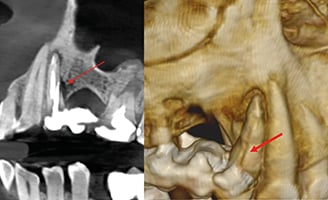The Digital Dentist magazine, Edition 7

Precision for every decision
Dr. Giuliano Fragola discusses his experience with a challenging case, emphasising the importance of precision in every decision. He highlights how the utilisation of the CS 8200 3D NEO Edition enabled him to obtain a comprehensive view of the situation, leading to the appropriate treatment plan. Additionally, Dr. Hubertus Schindler explores the application of both 2D and 3D imaging in a case involving impacted wisdom teeth. Dr. Yorgov shares insights into the utilisation of artificial intelligence (AI) with AI Insights, showcasing its role in enhancing radiography diagnosis.

In this case study, Dr. Giuliano Fragola, demonstrates by using 3D imaging technology, specifically the CS 8200 3D NEO edition, he was able to accurately diagnose the issue and formulate an effective treatment plan for his patient experiencing significant pain. His use of imaging showcases the impact it can have on enhancing patient care and outcomes.
Contributors

Share







